Marvel Rivals Controller vs PC Debate: Pros, Cons, and Gameplay Insights
Updated On: November 29, 2025 by Aaron Connolly
Marvel Rivals Controller vs PC Debate Overview
The Marvel Rivals community can’t agree on whether controller or mouse and keyboard makes for better gameplay. There are big differences in aiming, movement, and how competitive things get. PC players enjoy better camera control and accuracy, while console players get aim assist and, honestly, matches that feel a bit more forgiving.
Key Issues in the Debate
Aiming and Movement Differences
PC players using mouse and keyboard control the camera with way more precision. A mouse lets you whip around and land shots faster than a controller ever could.
Controller users deal with slower camera movement, even after cranking up sensitivity. Thumb sticks just aren’t built for pinpoint aiming like a mouse.
Aim Assist Controversy
Console players rely on aim assist to close the gap. This feature helps even things out, since controllers make aiming trickier.
PC players often complain that aim assist gives console users an edge in crossplay. Others argue that mouse precision still wins out in most cases.
Platform-Specific Meta
Some heroes shine on PC, but not so much on console. Control differences really shake up which characters dominate.
Competitive metas split by platform. You see different picks and bans depending on where you play.
Why It Matters for Players
Competitive Ranking Impact
PC matches usually ramp up the intensity. Even lower ranks can feel tough for new players, since the skill ceiling sits higher.
Console play is a bit more relaxed. Players find it easier to climb ranks on PlayStation 5 or Xbox Series X than on PC.
Platform Choice Affects Experience
Your favorite heroes might just work better on a certain platform. It’s worth thinking about where your main characters perform best.
Some folks switch platforms to match their goals. If you want the toughest matches, go PC. If you want something less stressful, console’s a solid pick.
Investment and Equipment
PC players get to pick between mouse and keyboard or controller. The game supports both Xbox and PlayStation controllers if you plug them in.
Console players can’t use mouse and keyboard. They’re stuck with controllers, which kind of limits their options in crossplay.
How the Community Is Responding
Mixed Platform Lobbies
Crossplay stirs up a lot of debate. PC players often ask why console users get aim assist when they can’t use controllers in every competitive mode.
Plenty of people want input-based matchmaking. That way, controller users get grouped together, no matter the platform.
Platform Preferences Emerging
Hardcore competitive types head for PC to get the most precision. Casual players usually stick with console for comfort.
Some own Marvel Rivals on both console and PC. They switch depending on whether they want to sweat or just chill out.
Community Solutions
Gaming forums buzz with talk about the best settings for each input. Players swap sensitivity numbers and control schemes all the time.
YouTubers and streamers post guides comparing platforms. These help newcomers pick where to start their Marvel Rivals journey.
Input Device Options in Marvel Rivals
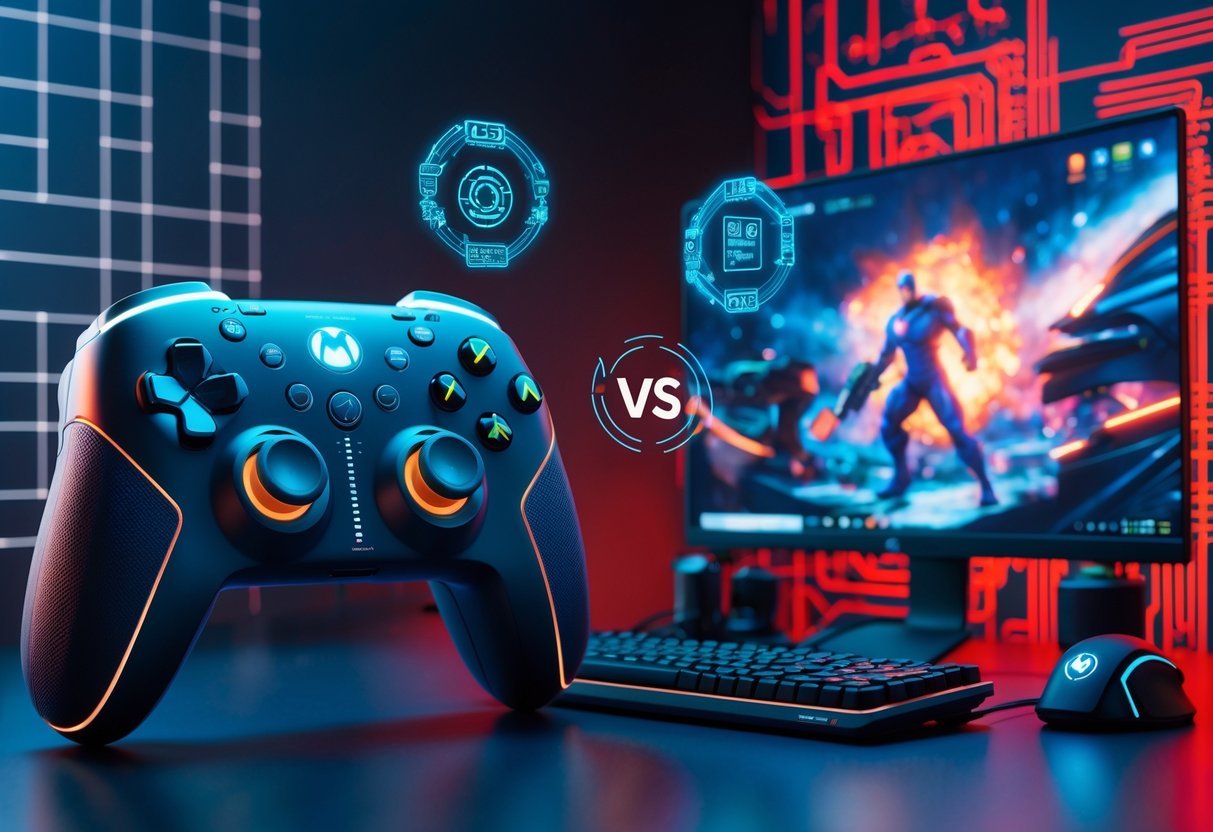
Marvel Rivals lets you play with controllers or mouse and keyboard on every platform. You get some real flexibility here. The game recognizes most big-name controllers right away, while mouse and keyboard users get raw input settings for sharper aim.
Controller Compatibility
Marvel Rivals supports controllers really well on both PC and consoles. You just plug in an Xbox or PlayStation controller and you’re good to go.
Steam usually detects your controller instantly. The game flips to controller mode without you fiddling with settings.
Supported Controllers:
- Official Xbox controllers (all generations)
- Official PlayStation controllers (DualShock 4, DualSense)
- Steam Controller
- Most third-party controllers with XInput support
Third-party controllers work best if they use XInput drivers. Cheap knock-offs might not show up or could lag.
The game gives you built-in options for sensitivity, deadzones, and button remapping. You’ll find these in the controller tab of the settings.
Warning: Stay away from unofficial adapters or modded devices. Marvel Rivals actually blocks these to keep things fair.
Mouse and Keyboard Support
Mouse and keyboard support in Marvel Rivals focuses on raw input for accuracy. The devs patched out a bunch of old aiming problems.
Season 1 brought settings to turn off mouse acceleration and smoothing. Those features used to mess with aiming and made things feel off.
Key M&K Features:
- Raw input (1:1 mouse movement)
- Customizable DPI
- Polling rate up to 1000Hz
- Tons of keybind options
- No extra input lag
Mouse settings live under the Keyboard tab in Combat options. Make sure both “Mouse Acceleration” and “Mouse Smoothing” are OFF if you care about aim.
The game works with high DPI mice and gaming keyboards with macro keys. Most gear runs fine without extra software, but drivers can help you customize more.
Quick win: Try your mouse settings in the Practice Range. Make sure your crosshair tracks exactly how you want.
Supported Platforms
Marvel Rivals launches on PC (Steam), PlayStation 5, and Xbox Series X/S. Cross-platform play works, but each system handles input a bit differently.
PC (Steam):
- Native mouse/keyboard and controller
- Switch inputs during a match
- Weaker aim assist for controllers
- Full customization options
PlayStation 5:
- DualSense controller with haptic feedback
- USB keyboard and mouse support
- Stronger aim assist than PC
- Ranked modes locked to platform
Xbox Series X/S:
- Xbox Wireless Controller standard
- USB peripherals supported
- Console-level aim assist
- Cross-play in casual modes only
Cross-play works in quickplay, but ranked matches stay within your platform. PC players face other PC users in ranked, no matter what input they use.
Console players get more aim assist to keep up with potential M&K users in cross-play. PC controller users often feel left out, since their aim assist is weaker than on console.
Controller Experience on PC
PC players can use controllers in Marvel Rivals with a simple plug-and-play setup. Xbox and PlayStation controllers work right out of the box, but you’ll notice less aim assist than on console.
Controller Setup Steps
Setting up a controller on PC is easy. Plug your Xbox or PlayStation controller into your PC with a USB cable. Steam should pick it up automatically.
Marvel Rivals recognizes the controller as soon as you connect it. The UI and button prompts swap over without needing a restart.
Stick to official controllers. Third-party ones might not work right or could introduce input lag. Wireless works with Bluetooth, but wired connections are more reliable.
You don’t need extra software for basic use. The game handles mapping, and you can jump in right away.
Recommended Controllers
Xbox Series X|S Controller is probably your best bet for PC. It connects easily via USB or Xbox Wireless Adapter. The sticks feel precise for movement.
PlayStation 5 DualSense Controller also works great over USB. Steam reads it as an Xbox controller, so all the buttons work. Adaptive triggers don’t do anything in Marvel Rivals yet, though.
Both controllers run about £50-60 new. If you’ve got an older Xbox One or PS4 controller, those work too. Avoid cheap third-party controllers—they usually have deadzone problems that mess up your aim.
Quick win: Try your controller in training mode before diving into ranked. Adjust your sensitivity until it feels right.
Potential Limitations
Aim assist drops off hard on PC compared to console. Controller players struggle against mouse users when it comes to aiming. Long-range heroes like Hawkeye get trickier to play.
Wireless connections can cause input lag. Bluetooth adds 10-20ms of delay versus wired. That might not sound like much, but it matters for tanks and supports.
Warning: Some people claim the devs ban controller users, but nothing official confirms this.
UI glitches sometimes pop up between controller and keyboard prompts. Menus work fine, but in-game, you might see the wrong button symbols.
Mouse and Keyboard Gameplay on PC
Mouse and keyboard setups give Marvel Rivals players the sharpest precision and fastest reactions. You control your crosshair directly and hit abilities quickly. Most competitive players stick with this setup—it just feels better for aiming and quick plays.
Aiming Precision
The mouse and keyboard’s top perk? Pure aim precision. You use your whole arm, wrist, and fingers to move the crosshair. That’s way more control than a thumb stick.
Marvel Rivals got a big update in Season 1 with raw input support. Now you can turn off mouse acceleration and smoothing. Those settings used to mess up aim by changing crosshair speed based on how fast you moved.
Essential Settings:
- Mouse Acceleration: OFF
- Mouse Smoothing: OFF
- DPI: 400-800 for accuracy
- In-game sensitivity: 2.5-4.0
Dialing in your sensitivity is crucial. You should be able to spin 180 degrees easily but still track targets smoothly. The Practice Range is great for testing until it feels right.
Movement and Controls
Mouse and keyboard give you a ton of buttons. You can bind movement, abilities, and communication separately, so your fingers never leave the important keys. That means you can jump, aim, and use abilities all at once.
Key advantages:
- WASD feels snappy
- Each ability on a separate key
- Quick weapon swaps
- Easy to use comms
Movement feels tight and responsive. You get exact directional input and can combo movement with abilities. Heroes like Spider-Man and Venom really benefit since you can swing and aim at the same time.
The catch? You need a proper desk setup. Playing from the couch isn’t really an option. Some controller players find the switch tough at first.
Player Preferences
Most competitive Marvel Rivals players stick with mouse and keyboard. Heroes who rely on aim—think Hawkeye, Black Widow, Punisher—just work better with a mouse. You hit headshots more often and track moving enemies more easily.
Gaming expert James Connolly says, “mouse and keyboard becomes essential once you start playing ranked seriously. The precision difference is noticeable immediately, especially for duelist heroes.”
Best heroes for mouse and keyboard:
- Hawkeye (sniping)
- Black Widow (quick flicks)
- Iron Man (tracking)
- Storm (placing abilities)
Some prefer controllers for heroes like Jeff the Landshark or supports where aim isn’t everything. But for most damage dealers, mouse and keyboard give you a real edge.
It really depends on your goals. If you just want to chill, a controller’s fine. If you want every advantage, mouse and keyboard is the way to go.
Aim Assist and Input Balance
Marvel Rivals uses aim assist to help controller players keep up with mouse and keyboard users. The system gets a lot of heat, though—it’s just too weak on PC, but it’s way stronger on console. This causes balance issues across platforms, and lots of PC controller players feel like they’re fighting an uphill battle in cross-play matches.
Availability of Aim Assist in Marvel Rivals
Marvel Rivals gives controller players access to aim assist on every platform. When your crosshair gets close to an enemy, the game slows down your sensitivity and nudges your aim toward the target—nothing too dramatic, but you’ll notice it.
On PC, you can tweak aim assist using two main settings. The Aim Assist Window Size decides how close your crosshair needs to get before it kicks in. Most folks land somewhere between 40 and 50 for a good balance.
Aim Assist Strength sets how much help you get with tracking. Try starting at 80-100, but dial it down if it feels too sticky or weird during matches.
Quick tip: Hop into the Practice Range and mess with your settings before playing with others. It’s the best way to find what feels right without letting your team down.
The system only targets enemy center mass, not their heads. That keeps things fair and still gives controller users a bit of help.
Impact on Competitive Balance
Aim assist on PC just doesn’t stack up against mouse and keyboard. Controller players often say they’re at a big disadvantage.
A lot of competitive players call PC aim assist “almost non-existent” or “pathetically mild.” It doesn’t really close the skill gap, especially if you play aim-heavy heroes like Hawkeye or Black Widow.
Warning: Some people try using mouse and keyboard adapters on console to abuse stronger aim assist. It’s against the game’s rules and can get your account penalized.
The gap stands out in cross-play matches. PC controller users have weaker aim assist than console players, even with the same controller, and still have to face mouse users with better precision.
Some controller players just pick heroes that don’t need perfect aim. You’ll see more Scarlet Witch, Jeff the Landshark, or Adam Warlock, since their abilities are less about sharp shooting.
Differences Between Console and PC
Console versions of Marvel Rivals give you much stronger aim assist than the PC version. It’s honestly a bit odd—your controller acts differently depending on the platform.
| Platform | Aim Assist Strength | Cross-Play Impact |
|---|---|---|
| Console | Strong/Consistent | Platform-locked ranked |
| PC Controller | Weak/Inconsistent | Faces M&K players |
| PC M&K | None | Raw input advantage |
Console players get platform-locked ranked modes, so you only play against other controller users. That makes things a bit more even.
PC controller players have it rough. They’re up against mouse users in quickplay, and their aim assist is weaker than what console players get with the same hardware.
You’ll notice the difference most during chaotic team fights. Console aim assist stays reliable, but PC controller players often struggle to keep up with multiple targets.
Next step: If you’re on PC with a controller, stick to heroes that don’t need razor-sharp aim until the devs fix the balance.
Comfort and Accessibility Considerations
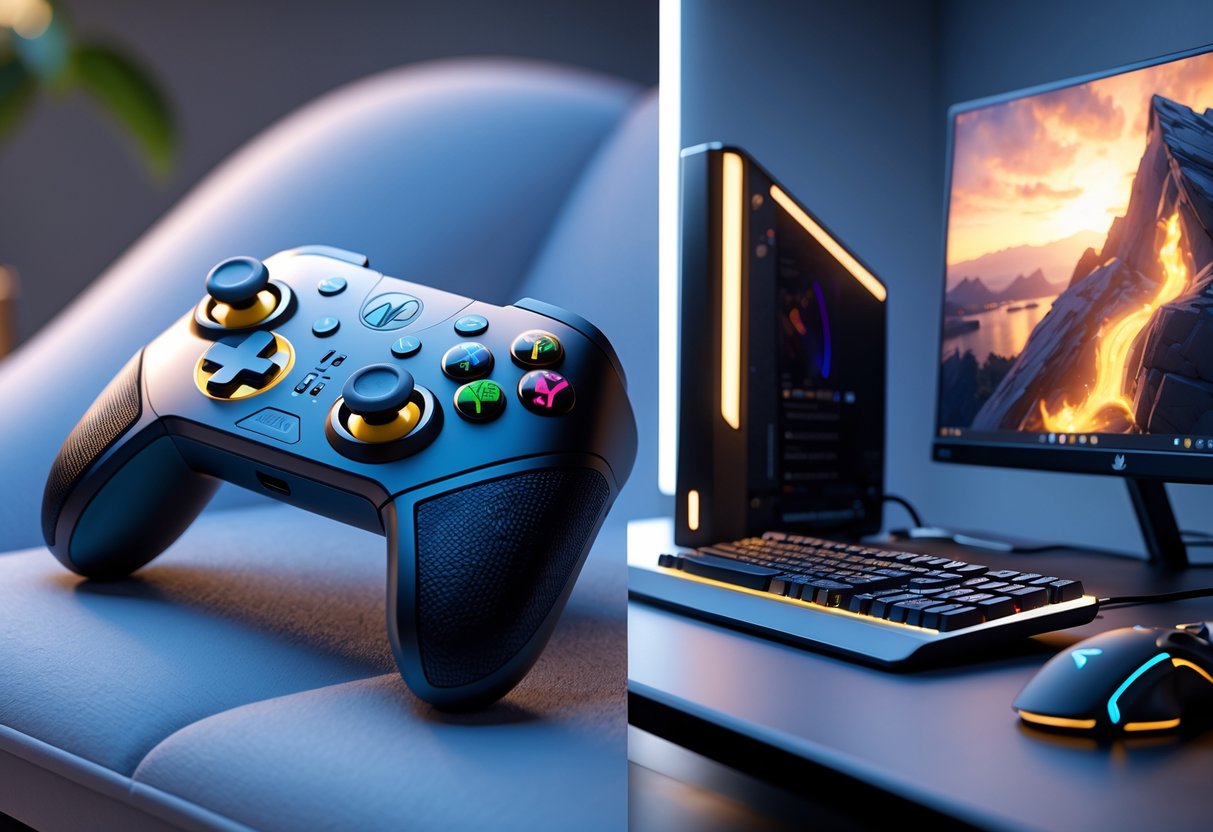
The physical demands of gaming really depend on what you use. Controllers are great for chilling out, while mouse and keyboard setups need more desk space but let you customize everything.
Ergonomics of Controllers vs Mouse and Keyboard
Controllers are perfect if you’re after comfort. You can play from the couch, your bed, or wherever you feel like lounging.
The design just fits your hands. Most people can play for hours and avoid wrist or shoulder pain you sometimes get from sitting at a desk.
Modern controllers like the DualSense or Xbox Wireless Controller have ergonomic grips and nice weight balance. That helps cut down on hand fatigue during long Marvel Rivals sessions.
But controllers do limit your posture choices. If you’re using the analog sticks a lot, your thumbs might start to ache after a while.
Mouse and keyboard setups make you think about desk ergonomics. You need a good chair, the right desk height, and a well-placed monitor to avoid strain.
You can tweak everything—mouse pad size, keyboard angle, arm rest height—to suit your body.
A lot of competitive players use low mouse sensitivity, so they make big arm movements instead of just flicking their wrists. It can actually help prevent repetitive strain injuries.
Quick win: Set your desk so your elbow bends at about 90 degrees when your hand’s on your mouse.
Accessibility for Different Players
Controllers are a real win for gamers with mobility limitations. All the buttons are close together, so you don’t have to stretch much.
If you don’t have a lot of space or can’t sit at a desk, controllers just make sense. Students in dorms or folks sharing spaces often prefer them.
Specialized controllers like the Xbox Adaptive Controller open things up even more. You can customize the inputs to fit different physical needs.
Mouse and keyboard setups need more space and coordination. You have to use both hands—one for keys, one for the mouse.
But you get more button customization. You can remap keys or use macro keys for tricky ability combos.
Some players with fine motor challenges actually find mouse aiming easier than analog sticks, since you can adjust DPI settings to match what feels right.
Personal Comfort and Play Styles
Your setup really shapes how you play. Casual sessions? Most people go for controllers—they’re just more comfortable.
A lot of folks say controllers feel more “natural” for Marvel Rivals’ third-person view. Analog movement makes hero navigation smoother.
Controllers also give you haptic feedback—that rumble when Captain America’s shield lands feels awesome.
Competitive players usually pick mouse and keyboard, even if it’s less comfy. The precision is just too good to pass up in ranked.
Think about your gaming schedule too. Short, sweaty sessions? Mouse and keyboard might be best. Longer, laid-back play? Controller all the way.
Warning: Don’t force yourself into an uncomfortable setup just to win. If you’re not comfortable, your reaction time and decisions get worse—especially in tight team fights.
Performance in Competitive Play
Controller and PC players each get their own edge in Marvel Rivals matches. The big debate? Aim precision versus game sense and positioning.
Esports and Competitive Standards
PC dominates when it comes to aim-heavy heroes. Psylocke, for example, needs precise tracking and quick flicks to finish off supports.
PC players usually outperform controller users with heroes that demand serious accuracy. Using your whole arm to aim just gives you better tracking, especially against tiny hitboxes like Cloak and Dagger.
Most pro Marvel Rivals tournaments either split input methods or lean heavily toward PC players. That’s pretty standard, just like Overwatch or Valorant.
Quick win: If you’re on controller, try melee heroes like Magik or Black Panther—they care more about positioning than perfect aim.
| Input Method | Best Hero Types | Competitive Viability |
|---|---|---|
| PC (M&K) | Psylocke, DPS | High |
| Controller | Melee, Tank | Moderate |
Expert Opinions and Community Insights
Gaming expert James Connolly points out that Marvel Rivals tries to balance things with a mix of hero types. “The game includes melee heroes specifically to give controller players viable competitive options,” he says.
Top-ranked controller players still have trouble staying consistent against PC opponents. Even the best controller users can’t always keep up with mouse precision on aim-heavy heroes.
The community can’t agree on whether ranked should separate inputs. Some PC players think controllers mess with team balance in higher ranks.
You can tweak your controller or settings to help a bit, but thumb-stick aiming just can’t match mouse precision in tough matches.
Warning: If you’re using a controller, avoid playing pure DPS heroes like Psylocke in ranked. You’ll probably have a hard time keeping up at higher skill levels.
Game Features and Device Integration
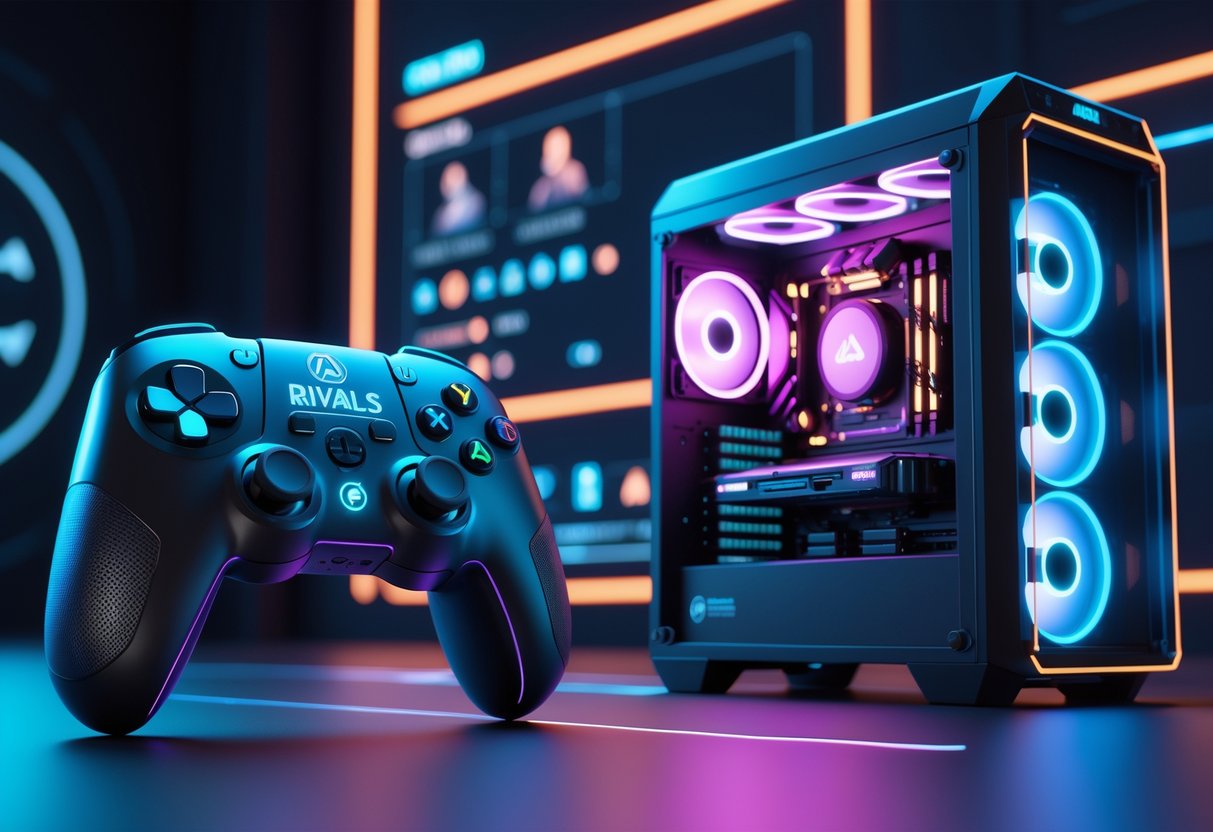
Marvel Rivals works well with both controllers and mouse setups. You get full cross-platform support and can switch between devices whenever you want. The customization options for both are solid, though there’s still room to improve.
In-Game Settings and Customisation
Marvel Rivals gives you lots of settings for both controller and mouse. Plug in an official Xbox or PlayStation controller on PC, and the game recognizes it right away.
Controller Settings Include:
- Horizontal and vertical sensitivity (175-200 and 100-200 work well)
- Aim sensitivity curve types (Linear Curve is usually best)
- Minimum input deadzone (set it to 1 for less lag)
- Aim assist window size and strength
You can swap devices mid-match without rebooting. That’s handy if you want to test different heroes with different controls.
Mouse and Keyboard Improvements: The Season 1 update in January 2025 brought raw input options. Now you can turn off mouse acceleration and smoothing under Keyboard > Combat > Mouse.
These changes finally give mouse users true 1:1 input. Before, some players complained about inconsistent aim from software interference.
Potential for Future Updates
PC controller aim assist still needs work. Most players say it’s much weaker than on console.
Feedback from the community calls PC controller aim assist “almost non-existent,” especially compared to shooters like Call of Duty or Apex Legends. So PC controller users face mouse players with barely any help.
Expected Improvements:
- Stronger aim assist options for PC controllers
- Better vibration customization
- More advanced button mapping
- Smarter cross-platform balancing
Developers have started listening, especially with the raw input update. More patches should make controller play on PC more competitive, but still fair for everyone.
Pros and Cons of Using Controllers on PC
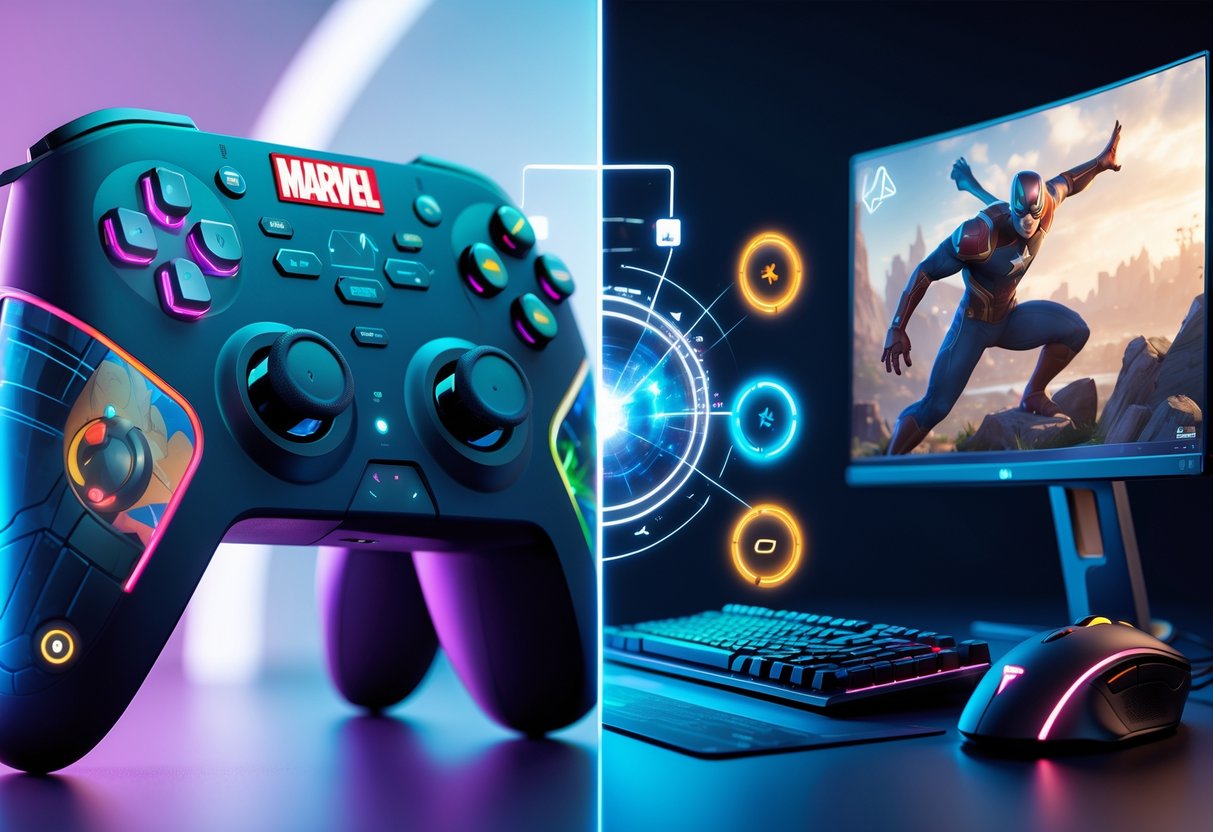
Using a controller on PC in Marvel Rivals has real ups and downs. You get comfort and familiarity, but you’ll struggle with aim assist and precision compared to mouse and keyboard.
Advantages
Controllers are just more comfortable and accessible for PC gaming. You can play from the sofa, no desk required. That relaxed posture is great for long sessions.
If you’re used to consoles, controllers feel intuitive. You don’t have to relearn anything—just pick it up and play. The button layout is familiar from the start.
Rumble feedback boosts immersion in a way mouse and keyboard can’t. When you play Captain America, those shield hits feel real thanks to the vibration.
Some heroes are perfect for controllers. Support characters like Jeff the Landshark, Adam Warlock, and Mantis don’t need pinpoint aim. Their kits focus on healing and utility, not sniping.
Tank heroes like Magneto and Doctor Strange also work well. They rely more on positioning and timing than sharp aim. Movement feels smooth with a controller.
Controllers are great for area-of-effect abilities. Heroes like Scarlet Witch or Storm don’t need you to hit tiny targets every time.
Disadvantages
Weak aim assist is the biggest headache for PC controller users. On console, it’s strong, but on PC, many say it’s “almost non-existent.” You’re left at a big disadvantage against mouse users.
Precision limitations make aim-heavy heroes tough to play. Hawkeye, Black Widow, and other snipers are just harder to use. Analog sticks can’t match mouse accuracy for headshots.
Slower reaction times hurt in competitive matches. Turning fast or snapping to targets is just slower with a stick. Mouse users can flick instantly.
Limited button access makes advanced moves tricky. You can’t hit face buttons without leaving the aim stick, so jump-shooting and quick ability combos are harder.
Cross-play can be frustrating. PC controller users face mouse players in quickplay, and the input gap is obvious—especially with heroes that need sharp aim.
Pros and Cons of Mouse and Keyboard
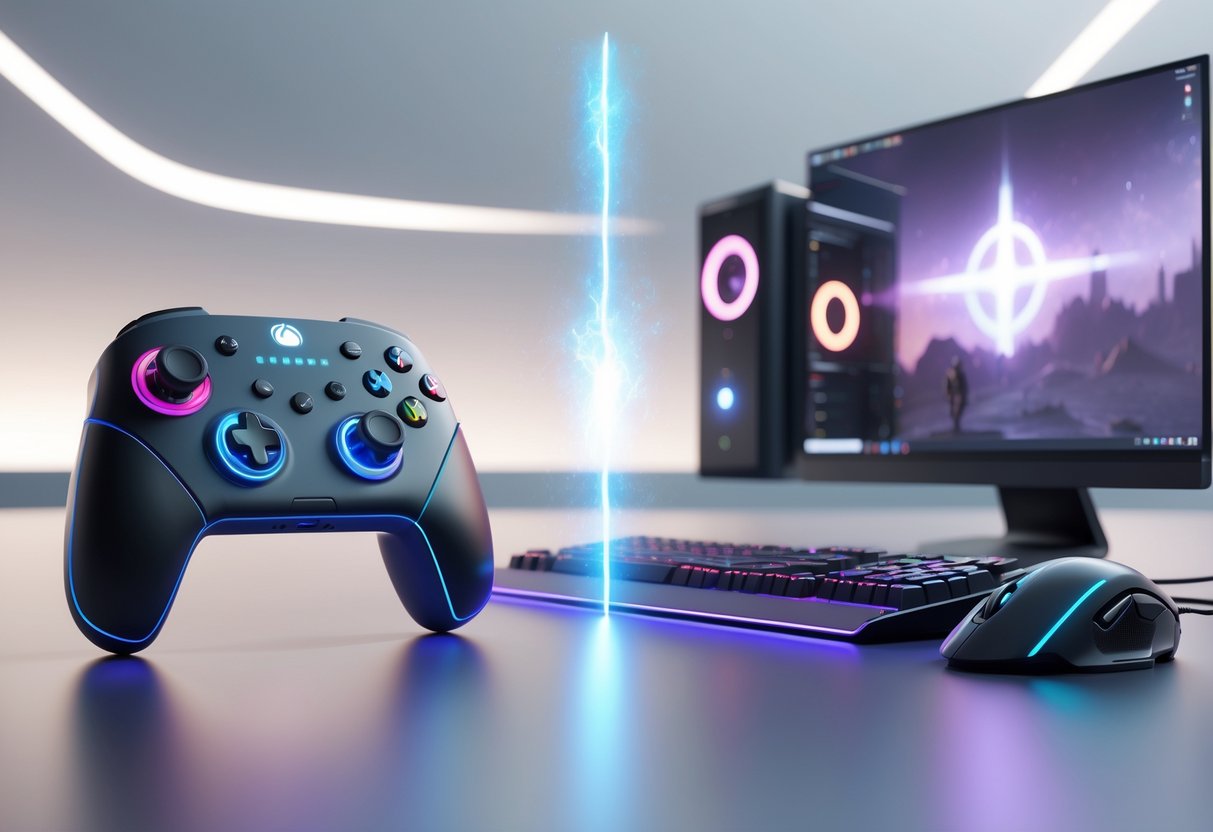
Mouse and keyboard setups give you the best aiming precision, but you’ll need to put in some time to get used to them. They also require a proper desk setup. If you care about accuracy and want to compete, this combo is tough to beat.
Strengths for PC Gameplay
Unmatched Precision Control
Mouse and keyboard give you the sharpest aiming accuracy in Marvel Rivals. You can move with your whole arm, your wrist, or just your fingers—whatever suits the moment.
Tracking fast-moving heroes gets way easier this way. With a bit of practice, flick shots and long-range snipes start to feel pretty natural.
Faster Reaction Times
When you move your mouse, it instantly moves your crosshair on screen. There’s no waiting for an analog stick to catch up.
You can snap between enemies in chaotic team fights without missing a beat. That speed really matters when the pressure’s on.
Extensive Customisation Options
Most gaming mice let you adjust DPI anywhere from 400 up to 3,000 or more. You can dial in sensitivity until it feels just right for you.
If you enable raw input settings, you can ditch mouse acceleration and smoothing. That way, your movements always match up exactly, and your muscle memory actually sticks.
More Available Inputs
A keyboard gives you loads of keys for abilities and commands. You can bind pretty much any combo you want, and you won’t have to stretch awkwardly for them.
A lot of players map common abilities to side mouse buttons. That keeps your left hand free to focus on movement or dodging.
Potential Limitations
Requires Dedicated Setup Space
You need a good desk, a decent chair, and a mouse pad to play well. Forget about lounging on the couch with this setup.
The gear takes up more room than just a controller, honestly. Traveling with it? Kind of a hassle.
Steeper Learning Curve
New players usually struggle with moving on the keyboard while aiming with the mouse. Getting both hands working together takes time—sometimes weeks.
Keybinding can get overwhelming fast. Trying to remember 15 or more key combos in the heat of battle? That’s not easy at first.
Less Comfortable for Extended Sessions
Long desk sessions can wear on your back and wrists. Controllers let you sit however you want, which is just more relaxing sometimes.
All those precise mouse movements can tire your hand out. Some competitive players even end up with strain injuries after a while.
Higher Equipment Costs
A quality gaming mouse and a mechanical keyboard usually cost way more than a controller. You can easily spend £200-300 or more for a full setup.
You might want wrist rests or an oversized mouse pad too. Those extras start to add up pretty quickly.
Community Opinions and Debates
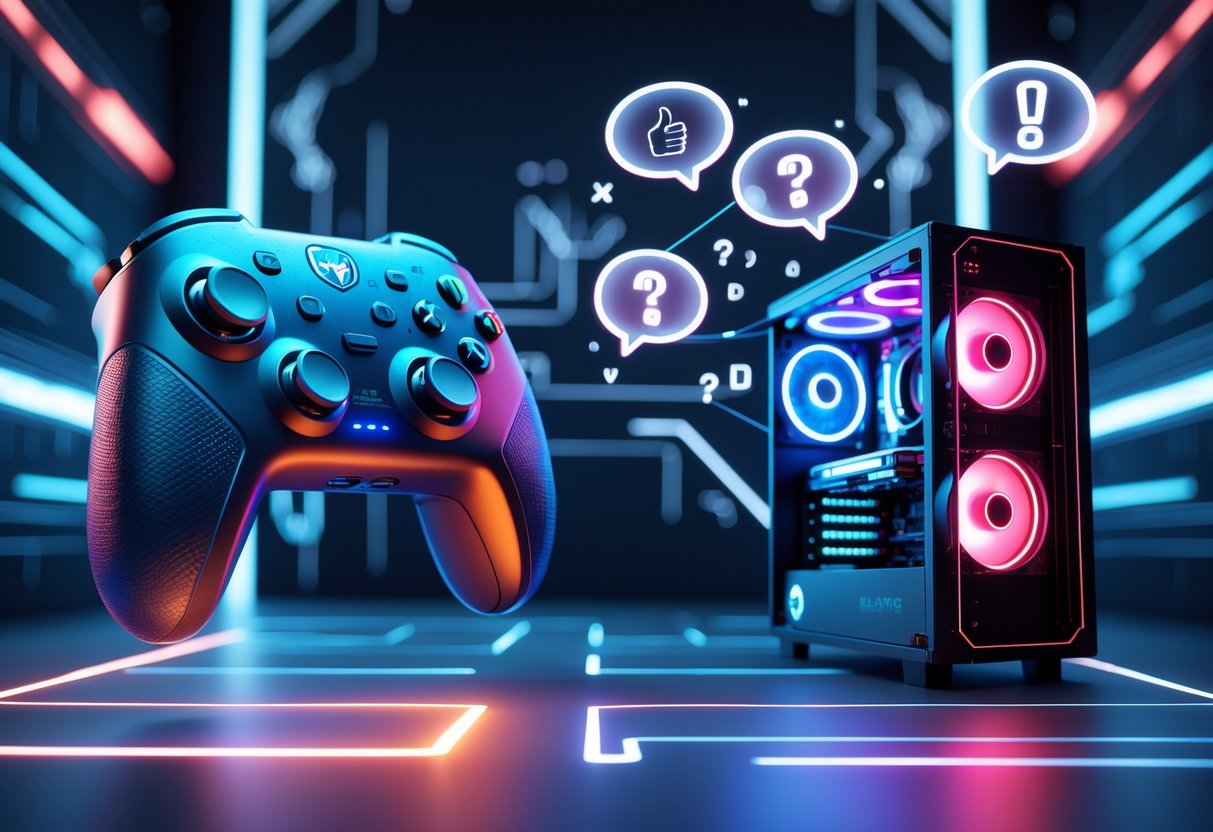
The Marvel Rivals community can’t agree on whether controllers can really match up to mouse and keyboard. People argue about everything—aim assist, which heroes play best with each input, you name it.
Summary of Online Discussions
Controller players on PC seem to have the toughest time, at least from what’s being discussed. Most say the aim assist feels “almost non-existent” compared to games like Call of Duty or Apex Legends.
PC controller users talk about their struggles all over the forums. Some call the aim assist “pathetically mild” or even “broken.” A few controller users have even said they might just quit if things don’t improve.
Cross-platform play stirs up even more debate. Console players get stronger aim assist than PC controller users, so mixed lobbies can feel unfair.
Popular controller-friendly heroes keep coming up:
- Jeff the Landshark
- Scarlet Witch
- Adam Warlock
- Cloak & Dagger
Lots of folks suggest sticking to support roles or heroes with big area-of-effect abilities if you’re on controller. Precision heroes like Hawkeye? Most agree you’ll want mouse and keyboard for those.
Popular Misconceptions
“Controllers are useless in Marvel Rivals”—that’s the big myth. Mouse and keyboard definitely have their perks, but you can do just fine with a controller if you pick the right heroes and tweak your settings.
The “aim assist is cheating” argument misses the mark. On PC, controller users actually get less help than console players, so the imbalance goes the other way in cross-platform matches.
People get confused about settings all the time. Some don’t realize you can turn off mouse acceleration and smoothing for rawer input. Others stick with default curves instead of trying linear for better control.
A lot of players think you need a fancy controller with paddles. Standard controllers work for most heroes—what really matters is how you set your sensitivity and deadzones.
Future Outlook for Marvel Rivals Controls
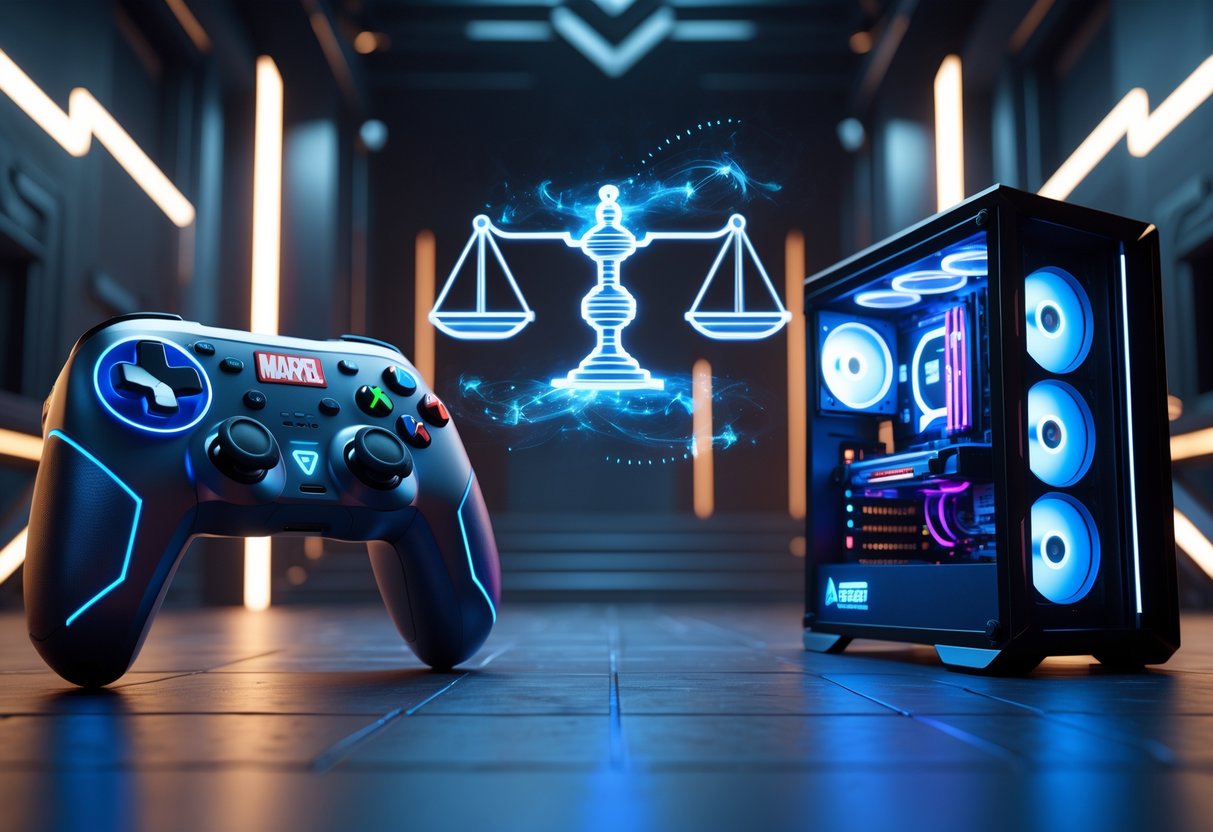
Marvel Rivals keeps getting pressure to improve controller support and input balance. NetEase listens to player feedback as they tweak cross-input gameplay.
Possible Changes in Input Support
NetEase might add more controller options based on alpha test feedback. Right now, they support basic controller input for PC.
Console versions will probably stay controller-only. This helps keep competitive balance fair for PlayStation and Xbox players.
Potential improvements might include:
- Better aim assist settings
- Custom button mapping
- Sensitivity curve tweaks
- Platform-specific optimizations
The game could add input-based matchmaking later on. That would put controller and mouse users in separate lobbies.
Nobody really knows if cross-platform play will work out. Balancing different input methods is tricky and takes time to get right.
Player Demands and Feedback
Alpha testers have mixed feelings about controller support. Many want better aim assist so they can keep up with mouse players.
Common player requests:
- Stronger aim assist for controllers
- Separate input lobbies
- More customisation options
- Console-only features
Pro players almost always use mouse and keyboard in tournaments. That puts pressure on ranked modes to separate inputs.
Controller users often feel left behind in PC lobbies. The community keeps asking NetEase to fix this before launch.
Quick tip: Try both input methods during beta so you know what feels best for you.
NetEase keeps gathering feedback from closed tests. They’ll probably use player retention and satisfaction data to guide future changes.
Frequently Asked Questions
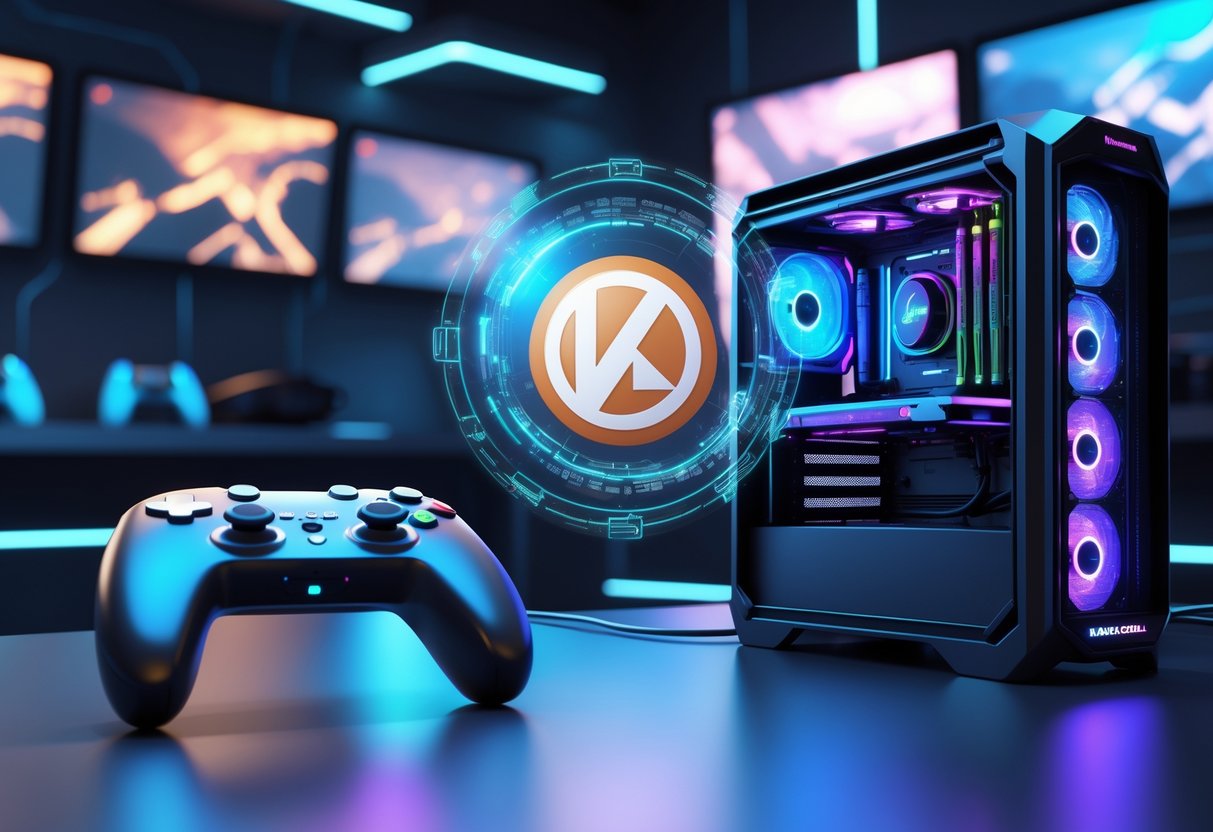
The controller vs. PC debate in Marvel Rivals usually centers on questions about performance, settings, and competition. Here are the big questions players ask when picking their input.
What are the benefits of using a mouse and keyboard over a controller for Marvel Rivals?
Mouse and keyboard give you way more precision for aiming. You can flick to targets and track enemies more smoothly than with analog sticks.
Raw input control is the main advantage. Mouse movements go straight to your crosshair—no weird software tricks in between.
You can react faster when turning or switching targets. That really helps when you’re in the middle of a messy fight or need to escape quickly.
You’ve also got more buttons for abilities, so you can do multiple things at once without taking your thumb off movement.
Mouse and keyboard shine with precision heroes like Hawkeye or Black Widow. They need perfect aim for headshots and long-range shots.
How can I improve my aim with a controller in Marvel Rivals?
Start by dialing in your sensitivity settings. Try horizontal sensitivity between 175-200, and keep vertical a bit lower for steadier control.
Pick Linear Curve for your aim sensitivity. It gives you steadier, more predictable movement without sudden acceleration.
Set your minimum deadzone to 1, or as low as you can without getting stick drift. That way, your stick responds instantly.
Experiment with aim assist—try 40-50 for window size and 80-100 for strength. Some players like smaller windows to avoid snapping to the wrong target in a crowd.
Focus on heroes that don’t need pixel-perfect aim, like Scarlet Witch, Jeff the Landshark, or Adam Warlock. Their abilities are more forgiving.
Is there a preferred controller for playing Marvel Rivals on the PS5?
The DualSense works great on PS5 for Marvel Rivals. It’s the default, and honestly, it does the job well.
If you want an edge, look for controllers with back paddles. They let you jump or use abilities without lifting your thumb off the stick.
The DualSense’s haptic feedback adds a cool layer for heroes like Captain America. His shield feels more powerful with the rumble effects.
If you’re super competitive, try the DualSense Edge. It has more customization and programmable back buttons.
Can players be competitive in Marvel Rivals PC ranked matches using a controller?
You can, but it’s not easy right now. PC ranked matches only pair you with other PC players.
The weak aim assist on PC is the biggest hurdle. Most say it’s “almost non-existent” compared to console or other shooters.
You’ll do best with certain heroes. Support characters like Cloak & Dagger or tanks like Magneto don’t need perfect aim.
Winning is more about smart positioning and teamwork than out-aiming mouse users. Focus on learning the game’s flow and timing abilities.
It’s a tougher road, but not impossible. You’ll need to lean into strategy and hero choice to make up for the aim gap.
What are some tips for configuring a controller on PC for Marvel Rivals?
Plug in your Xbox or PlayStation controller—Marvel Rivals should recognize it right away on Steam.
Go into settings and turn off mouse acceleration and smoothing if they’re messing with your controller input. Those can make aiming feel weird.
Use Steam’s Big Picture mode for extra button mapping and sensitivity tweaks.
If you’re on PlayStation, try DS4Windows for more compatibility and features.
Map your most-used abilities to buttons you can hit without thinking. If you’ve got paddles or extra buttons, put jump or key abilities there so you can aim and act at the same time.
Why do some players find playing Marvel Rivals with a controller challenging?
The weak aim assist on PC frustrates a lot of folks. Controller players really notice the disadvantage against mouse and keyboard users in mixed lobbies.
Turning quickly or landing flick shots just feels clunky with analog sticks. When an enemy suddenly pops up or you need to check your flank, controllers can feel slow compared to a mouse.
Precision heroes like Hawkeye or Black Widow? They’re a nightmare to play well if you’re on a controller. Hitting headshots or landing long-range shots takes a level of aim that’s just tough with sticks.
Marvel Rivals moves fast, and the game expects you to react even faster. Controllers just can’t match the speed of target switching or tracking that a mouse offers.
Some players also get tripped up trying to dial in their controller settings. Finding the right sensitivity or deadzone can take a lot of trial and error.

